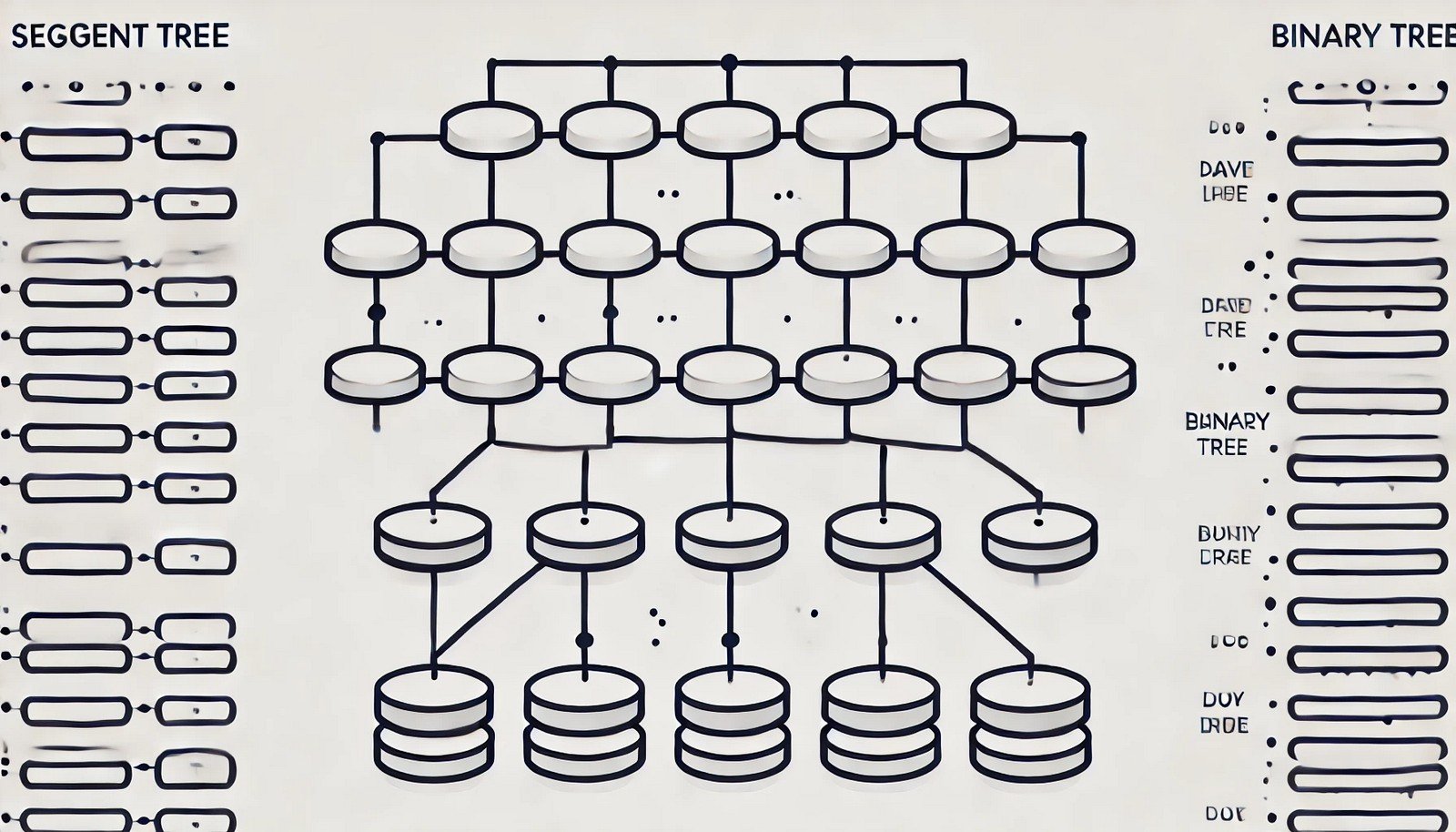Segment Tree
 (Representational Image | Source: Dall-E)
(Representational Image | Source: Dall-E)
Quick Navigation:
- Segment Tree Definition
- Segment Tree Explained Easy
- Segment Tree Origin
- Segment Tree Etymology
- Segment Tree Usage Trends
- Segment Tree Usage
- Segment Tree Examples in Context
- Segment Tree FAQ
- Segment Tree Related Words
Segment Tree Definition
A Segment Tree is a binary tree used for storing intervals or segments. It allows querying which of the stored segments contain a given point efficiently. It is commonly used in computational geometry and for solving range query problems such as range sum, minimum, or maximum in logarithmic time. Each node in a segment tree represents an interval, and the tree is constructed such that each leaf node corresponds to a single element in the array.
Segment Tree Explained Easy
Think of a Segment Tree like a magical bookshelf. Imagine you have books labeled with numbers, and you want to find the sum of the numbers between two books. Instead of counting them all one by one, the Segment Tree helps you find the sum quickly by organizing these books in smaller groups.
Segment Tree Origin
The concept of a Segment Tree originated in the field of computer science to optimize range queries and updates in logarithmic time. It became essential as data manipulation and analysis tasks increased in complexity.
Segment Tree Etymology
The term "Segment Tree" combines "segment," referring to subdivisions of an array, and "tree," representing its hierarchical structure.
Segment Tree Usage Trends
Segment Trees are widely used in competitive programming and real-time systems where fast query resolution is critical. Their importance has grown with the increasing complexity of range-based computational problems, particularly in applications like gaming, analytics, and data processing.
Segment Tree Usage
- Formal/Technical Tagging:
- Data Structures
- Computational Geometry
- Range Queries - Typical Collocations:
- "Segment Tree construction"
- "range sum query with Segment Tree"
- "update in Segment Tree"
- "Segment Tree application"
Segment Tree Examples in Context
- A Segment Tree can quickly calculate the sum of elements between two indices in an array.
- It is used in video games for collision detection by storing object positions and querying overlapping regions.
- In analytics, a Segment Tree efficiently handles large datasets for range-based queries and updates.
Segment Tree FAQ
- What is a Segment Tree?
A Segment Tree is a data structure used for answering range queries on arrays efficiently. - What are the main operations on a Segment Tree?
Querying and updating elements in logarithmic time. - How is a Segment Tree constructed?
It is built recursively by dividing the array into segments and storing partial results in tree nodes. - Why use a Segment Tree instead of a simple array?
It offers faster query and update operations compared to a simple array. - Can Segment Trees be used for non-numeric data?
Yes, they can be used for strings and other data types in range-based problems. - What is the time complexity of a Segment Tree?
Both query and update operations have a time complexity of O(log n). - Are there alternatives to Segment Trees?
Yes, alternatives include Fenwick Trees and Sparse Tables. - How is a Segment Tree implemented in practice?
Typically, it is implemented using arrays or dynamic memory allocation in languages like C++ or Python. - Can Segment Trees handle dynamic data?
Yes, but it requires additional operations to manage insertions and deletions. - What are real-world applications of Segment Trees?
Applications include gaming, geographic information systems, and data analytics.
Segment Tree Related Words
- Categories/Topics:
- Data Structures
- Algorithms
- Computational Geometry
Did you know?
The Segment Tree's efficiency has made it a favorite among competitive programmers, helping solve complex range problems in coding competitions like ICPC and Google Code Jam.
PicDictionary.com is an online dictionary in pictures. If you have questions or suggestions, please reach out to us on WhatsApp or Twitter.Authors | Arjun Vishnu | @ArjunAndVishnu

I am Vishnu. I like AI, Linux, Single Board Computers, and Cloud Computing. I create the web & video content, and I also write for popular websites.
My younger brother, Arjun handles image & video editing. Together, we run a YouTube Channel that's focused on reviewing gadgets and explaining technology.



Comments powered by CComment